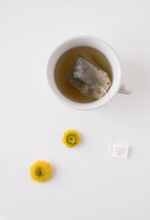The CSUN Institute for Community Health and Wellbeing and our Earth Month 2021 partners:
CSUN Associated Students | AS Productions/Sustainability | Institute for Sustainability | AS Outdoor AdventuresCSUN | Food Pantry
invite all CSUN students to celebrate Earth Month 2021 by participating in the
HWB Earth Month Sustainable Wellbeing Photo Contest!

The theme of the Earth Month 2021 HWB Photo Contest is... Sustainable Wellbeing
What does sustainable wellbeing mean to you? How does sustainable wellbeing show up in your life? How do you incorporate sustainable wellbeing into the following areas of wellness?
Emotional Spiritual Intellectual Physical Environmental Financial Occupational Social
During the month of April, we invite students to share their pictures and captions that capture the essence of sustainable wellbeing with us. Pictures should incorporate sustainable wellbeing withinthe Eight Dimensions of Wellness.
There will be a chosen winner for each one of the eight categories.
To submit your photos: https://csunsbs.qualtrics.com/jfe/form/SV_03txDw8V74Yg3ky
1. Emotional – Coping effectively with life and creating satisfying relationships.These are the area that requires a person to have healthy relationship skills. The first part is to have a healthy relationship with yourself, and then you are creating the foundation to having healthy relationships with others.
2. Spiritual – Expanding a sense of purpose and meaning in life. This is the key to everything. If you have some kind of spiritual path that YOU are comfortable with, that is the best way to overcome the obstacles that life can deliver. You will see them as challenges versus limitations if you have a spiritual path to follow.
3. Intellectual – Recognizing creative abilities and finding ways to expand knowledge and skills. Remember your brain is like a muscle and deserves to be exercised, strengthened, and nurtured with nutrition.
4. Physical – Recognizing the need for physical activity, healthy foods, and sleep. This is so important for stress management and to have the ability to maintain what you have accomplished and have the energy to pursue a life worth living. Take care of your body, but don’t obsess over it. Think of it as a tool to do what you need to do, to get you where you need to go.
5. Environmental – Good health by occupying pleasant, stimulating environments that support wellbeing. There is an old saying “you are who you hang around with,” and that includes your environment. Healthy-minded individuals seek healthy-minded environments.
6. Financial – Satisfaction with current and future financial situations. Taking care of responsibilities creates self-esteem and competence. Taking care of business breaks through the fear that your finances are in control. Go step by step, but address finances, or they will continue to trip you up and control you. It is actually fun to take care of your responsibilities once you see the positive effects of less stress.
7. Occupational – Personal satisfaction and enrichment from one’s work. Find out what you really love to do; ask yourself what you could do if you had no limitations. If you can identify what you really enjoy doing and could get paid for it, there is a strong likelihood that it is not too far from your reach, but you will have to work for it. The irony is that it won’t feel like work.
8. Social – Developing a sense of connection, belonging, and a well-developed support system. We are social beings and seek the connection with people; all people seek this in order to feel a part of a bigger picture. Attending to relationships is important. The goal is to attend to those relationships that are healthy versus destructive. End hopeless relationships.
Learning about the Eight Dimensions of Wellness can help you choose how to make wellness a part of your everyday life. Wellness strategies are practical ways to start developing healthy habits that can have a positive impact on your physical and mental health.
The Eight Dimensions of Wellness serve as a reminder that we are ‘whole’ human beings and need to treat the whole versus one part and neglect the other part. The key is balance. Once we have the tools to achieve balance and continue to maintain the process, we will be happy, healthier and more satisfied. The trick is to integrate these into your life whereas it becomes a natural response versus work.
To Learn More about the 8 Dimensions of Wellness and CSUN Resources for each category: https://www.csun.edu/shc/8-dimensions-wellness-covid-19-resources
SUSTAINABLE WELLBEING
Research suggest that sustainable wellbeing has two dimensions of happiness. On an inner level it is about finding ways to sustain our wellbeing beyond the short-term highs. On the outer level it is about a wellbeing that is eco-friendly (good for us and good for the planet). A greener wellbeing that does not cost the Earth. Sustainable Wellbeing is defined as a wellbeing that contributes to individual, community and/or global wellbeing and does not exploit other people, the environment or future generations. Genuine wellbeing, according to research, is a combination of two types of wellbeing, one of which may be the path towards sustainable wellbeing.
Hedonic wellbeing- The highs of positive emotions, the moments of joy, of serenity, of bliss. The type of wellbeing we get from pleasure and enjoyment. This is the form of wellbeing which is about fun and the ‘feel-good factor’ it is the hedonic treadmill. What this means is that we get used to this source of our wellbeing and start to take it for granted. It will never be the same as the first time one experiences something. Therefore, one needs to up the dose or add variety for this to continue to deliver as a form of wellbeing.
Eudaemonic wellbeing- The deeper wellbeing which comes through several routes from having meaning and purpose in life to how you are at your best and realizing your potential. Fulfillment is gained by putting effort into an endeavor that is meaningful individually. Eudaimonia is a term that dates back to the Ancient Greeks, but its modern definition is the experience of fulfillment which comes from acting in accordance with values, a life of activity driven by reason. It is a wellbeing which results from transcending one-self.
Transcendence is key to eudaimonia, going beyond one-self in the service of something external and with a sense of our connection to the bigger world. It focuses on we more than me. This is what makes eudaimonic wellbeing potentially the more sustainable form of wellbeing. For human happiness to be sustainable it has to be good for everyone and everything, to work for people and the planet and not deplete our collective resources or sacrifice the future for present gratification.
The shadow side of hedonic wellbeing is that short-term pleasures can have long-term costs, which makes them unsustainable as sources of wellbeing. Eudaimonic wellbeing, on the other hand has arguably little or no cost, making it good for the individual, community and the planet.
The big challenge of encouraging a more sustainable and fairer social contract is helping people to not just feel better but to live better lives. The key to that is to refocus from our own personal wellbeing towards a wider planetary wellbeing.
Photo Contest Submission Examples
|
|
|
|
|
|
|
|
SUSTAINABLE WELLBEING
What is Sustainable Wellbeing? Do you want to learn more? We have gathered some resources for you!
Research suggest that sustainable wellbeing has two dimensions of happiness. On an inner level it is about finding ways to sustain our wellbeing beyond the short-term highs. On the outer level it is about a wellbeing that is eco-friendly (good for us and good for the planet). A greener wellbeing that does not cost the Earth. Sustainable Wellbeing is defined as a wellbeing that contributes to individual, community and/or global wellbeing and does not exploit other people, the environment or future generations. Genuine wellbeing, according to research, is a combination of two types of wellbeing, one of which may be the path towards sustainable wellbeing.
Hedonic wellbeing- The highs of positive emotions, the moments of joy, of serenity, of bliss. The type of wellbeing we get from pleasure and enjoyment. This is the form of wellbeing which is about fun and the ‘feel-good factor’ it is the hedonic treadmill. What this means is that we get used to this source of our wellbeing and start to take it for granted. It will never be the same as the first time one experiences something. Therefore, one needs to up the dose or add variety for this to continue to deliver as a form of wellbeing.
Eudaemonic wellbeing- The deeper wellbeing which comes through several routes from having meaning and purpose in life to how you are at your best and realizing your potential. Fulfillment is gained by putting effort into an endeavor that is meaningful individually. Eudaimonia is a term that dates back to the Ancient Greeks, but its modern definition is the experience of fulfillment which comes from acting in accordance with values, a life of activity driven by reason. It is a wellbeing which results from transcending one-self.
Transcendence is key to eudaimonia, going beyond one-self in the service of something external and with a sense of our connection to the bigger world. It focuses on we more than me. This is what makes eudaimonic wellbeing potentially the more sustainable form of wellbeing. For human happiness to be sustainable it has to be good for everyone and everything, to work for people and the planet and not deplete our collective resources or sacrifice the future for present gratification.
The shadow side of hedonic wellbeing is that short-term pleasures can have long-term costs, which makes them unsustainable as sources of wellbeing. Eudaimonic wellbeing, on the other hand has arguably little or no cost, making it good for the individual, community and the planet.
The big challenge of encouraging a more sustainable and fairer social contract is helping people to not just feel better but to live better lives. The key to that is to refocus from our own personal wellbeing towards a wider planetary wellbeing.

References
Ronen, T., & Kerret, D. (2020). Promoting Sustainable Wellbeing: Integrating Positive Psychology and Environmental Sustainability in Education. International journal of environmental research and public health, 17(19), 6968. https://doi.org/10.3390/ijerph17196968
Ottaviani, Fiona, & Ottaviani, Fiona. (2018). Time in the Development of Indicators on Sustainable Wellbeing: A Local Experiment in Developing Alternative Indicators. Social Indicators Research, 135(1), 53–73. https://doi.org/10.1007/s11205-016-1489-9
What Health Providers and Organizations Need to Know About Wellness. (n.d.). Retrieved from https://store.samhsa.gov/product/What-Health-Providers-and-Organizations-Need-to-Know-About-Wellness/sma16-4951
Book : Sustainable Wellbeing by Tracy De Geer
Instagram: @greengirlleah, @traceyoconnellmd, @vejibag, @ecogardenuk, @sustainablewellbeing
Hashtags: #wellbeing #sustainablewellbeing #emotional #spiritual #intellectual, #physical #environmental #financial #occupational #social #EightDimensionsofWellness #sustainability #health


 Emotional
Emotional Spiritual
Spiritual  Intellectual
Intellectual  Physical
Physical  Environmental
Environmental  Financial
Financial Occupational
Occupational Social
Social